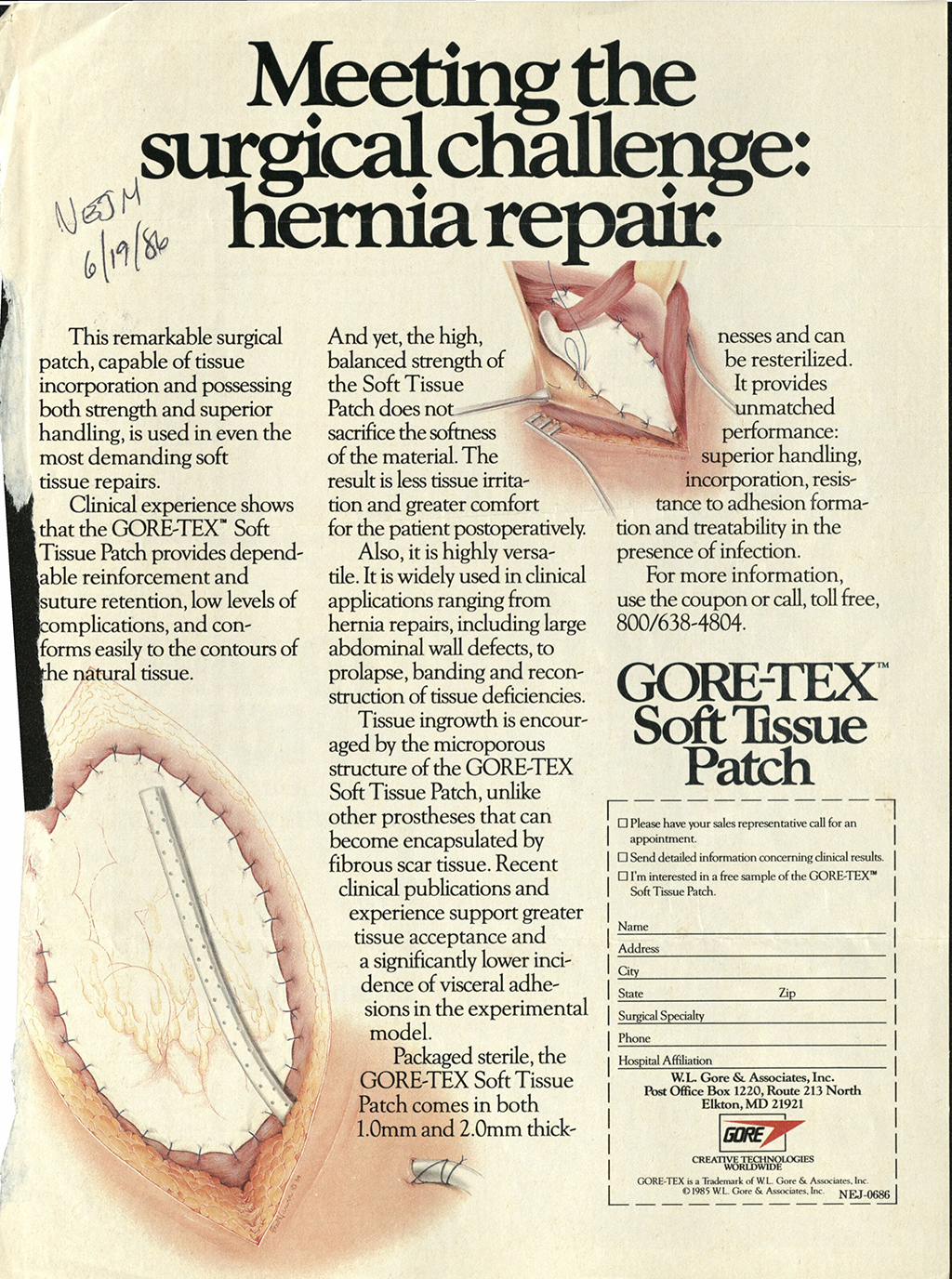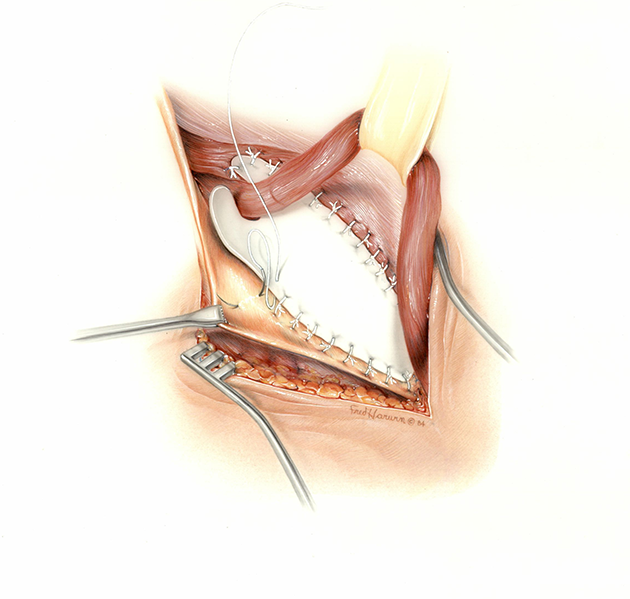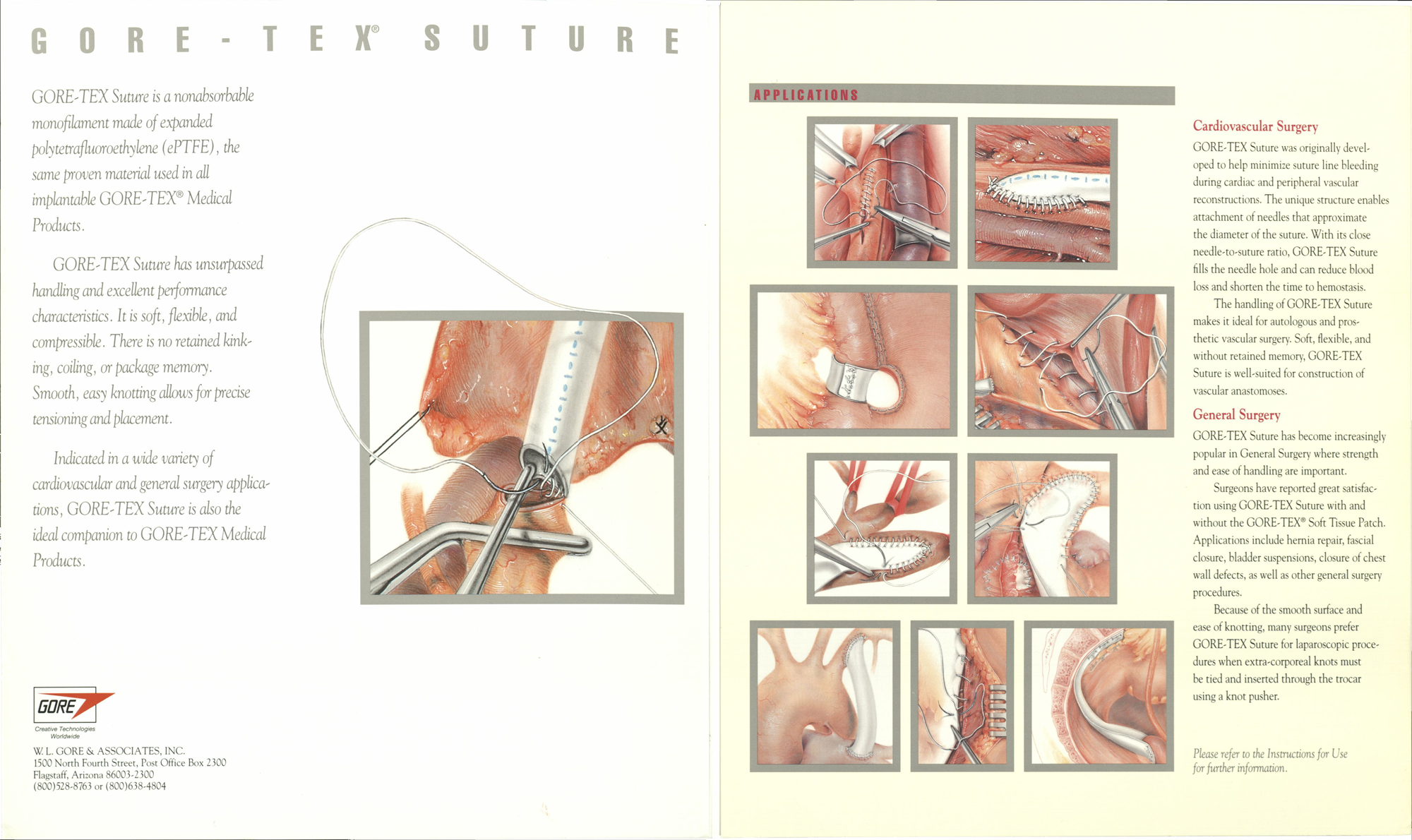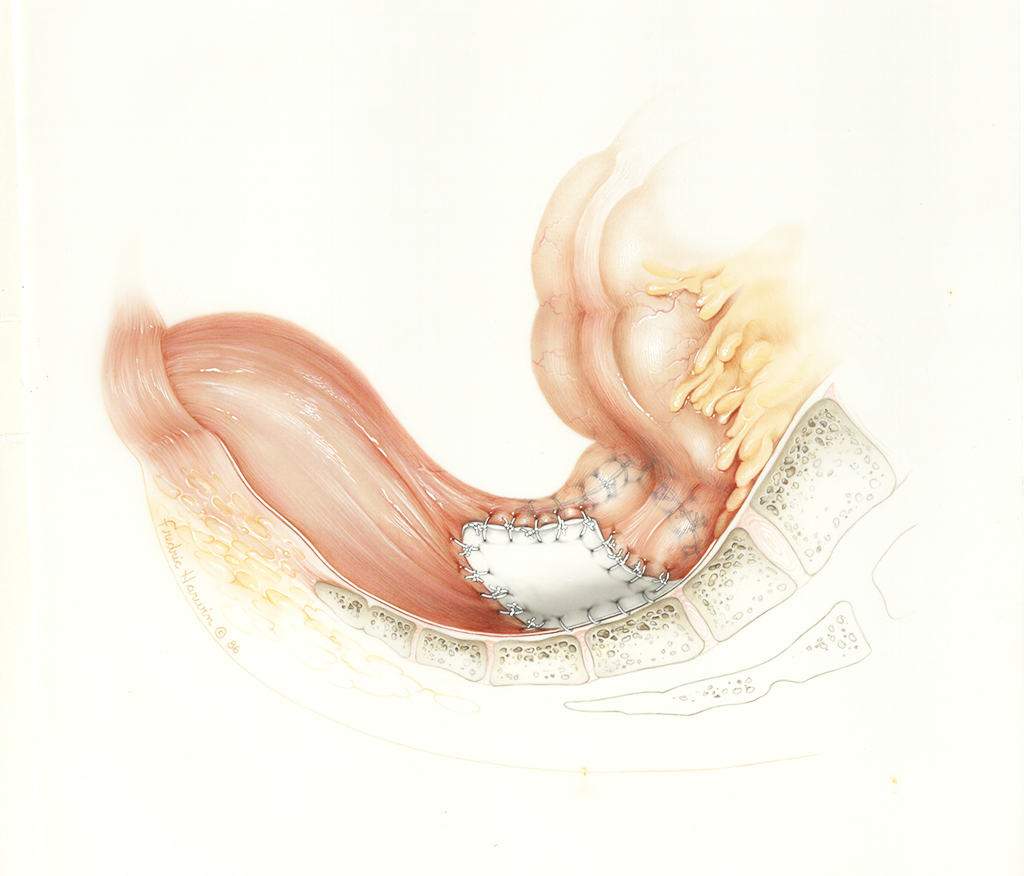Illustrating Medicine: The Visionary Work of Fred Harwin
![Poster for "Illustrating Medicine: The Visionary Work of Fred Harwin. Exhibit from Historical Collections & Archives. [website]."](/sites/default/files/2023-01/exhibit-poster_winter-2023_web-thumbnail.png)
Curated by Maria Cunningham, Director of Special Collections. Last updated February 2023.
Fred Harwin is an artist, medical illustrator, and ocularist. He is most known for illustrating the breakthrough medical text Manual of Cardiac Surgery with Drs. Brad Harlan and Albert Starr.
Harwin attained a Bachelor of Fine Arts degree from Wayne State University in 1964, focusing in interior architecture, drawing, and painting. After stumbling across an exhibit of art in medicine, Harwin became interested in studying medical illustration. He then went on to receive his Master of Science degree in Medical and Biological Illustration from the University of Michigan in 1967.
After completing school, Harwin served as the Director of Medical Illustration at Wayne County General Hospital in Ann Arbor, MI. In 1969, he joined the faculty at University of Oregon Medical School (now OHSU) and was head of the department of medical illustration for ten years. Harwin has taught at Portland State University, the Oregon Museum of Science and Industry, the University of California's San Francisco Medical Center and Johns Hopkins School of Medicine.
During his freelance years, Harwin served as the Consulting Illustration Editor for WL. Gore and Associates and Springer Verlag publishers. His medical illustrations appeared in books, promotional materials, advertisements, and other media. He ended his career as an Ocularist, founding the Center for Ocular Prosthetics in Portland, OR. He retired from the Center in December of 2019 and currently paints full time in his studio.
Drawing from the Fred Harwin collection, this exhibit traces Harwin’s career as a medical illustrator through a showcase of his original, unaltered illustrations, early drawing techniques, commercial work, and his later work as an ocularist.
Illustration technique
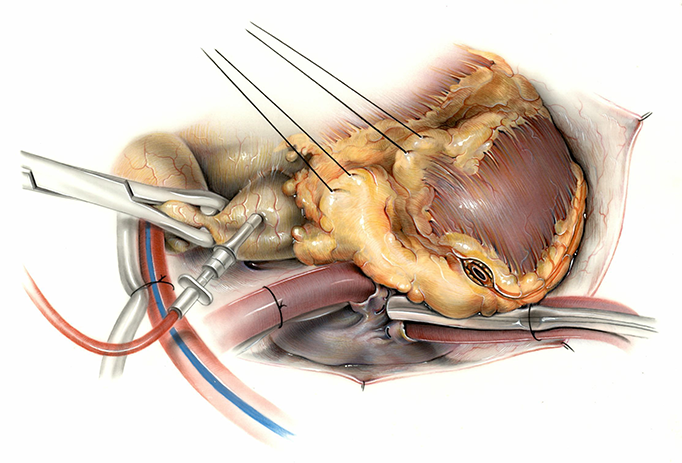
To illustrate the Manual of Cardiac Surgery, Harwin personally developed and used a technique he calls "Scientific Realism." His goal was to show what the surgeon experienced and how parts of the body looked when they were added to, removed, or modified.
The technique involves layering media on both sides of frosted mylar using transparent and opaque watercolor, color pencil, and pastel. The watercolor was applied with an airbrush. He received different effects by switching back and forth between using airbrush over pastels, pastel over colored pencil, and pastel over airbrush. This process allowed Harwin to show four layers of anatomy in one illustration.
The benefit of this technique is that it allows the surgeon or medical student to "see" an organ as it will appear in the operating room, with all its subtle coloration, while at the same time allowing the eye to see through to where a patch, a suture, or a graft has been applied. This allows the observer to grasp the totality of the surgery down to minute detail.
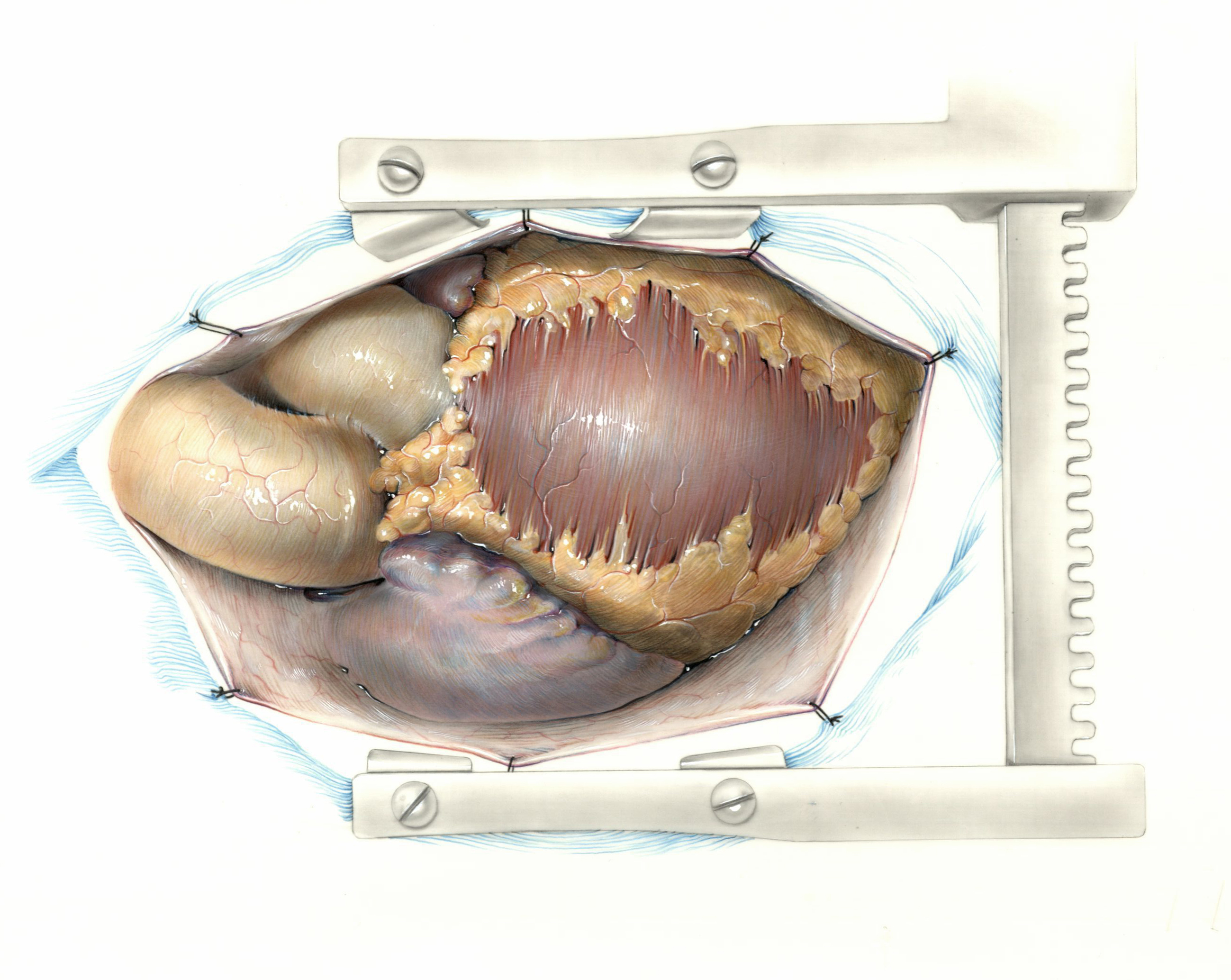
![Color illustration: Proper exposure of the heart in an inverted-T fashion (back), undated. Fred Harwin Collection [2022-014].](/sites/default/files/2023-01/2022-014_b1_3.4_open-heart_back.png)
From this side, you can see the vivid layering on the thymus and mediastinal fat surrounding the heart. Each side of the drawing has two layers.
Manual of Cardiac Surgery
While at OHSU, Harwin collaborated with renowned cardiac surgeons Dr. Brad Harlan and Dr. Albert Starr on the Manual of Cardiac Surgery, first published in 1980. This included the illustrated process of placing the famed Starr-Edwards heart valve, which was the first successful prosthetic device implanted in a human mitral valve and marked a new era in the treatment of valvular heart disease. The Manual was seen as a breakthrough in medical texts, being the first of the prevalent works on heart surgery to include color illustrations. It took three and a half years to complete and featured 130 original illustrations.
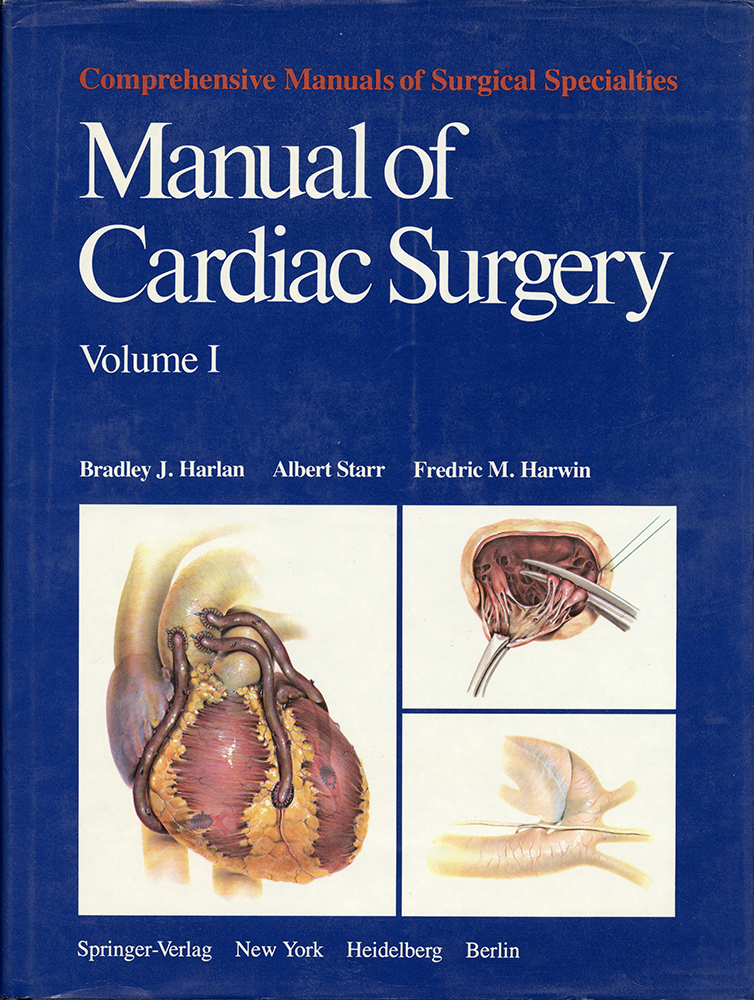
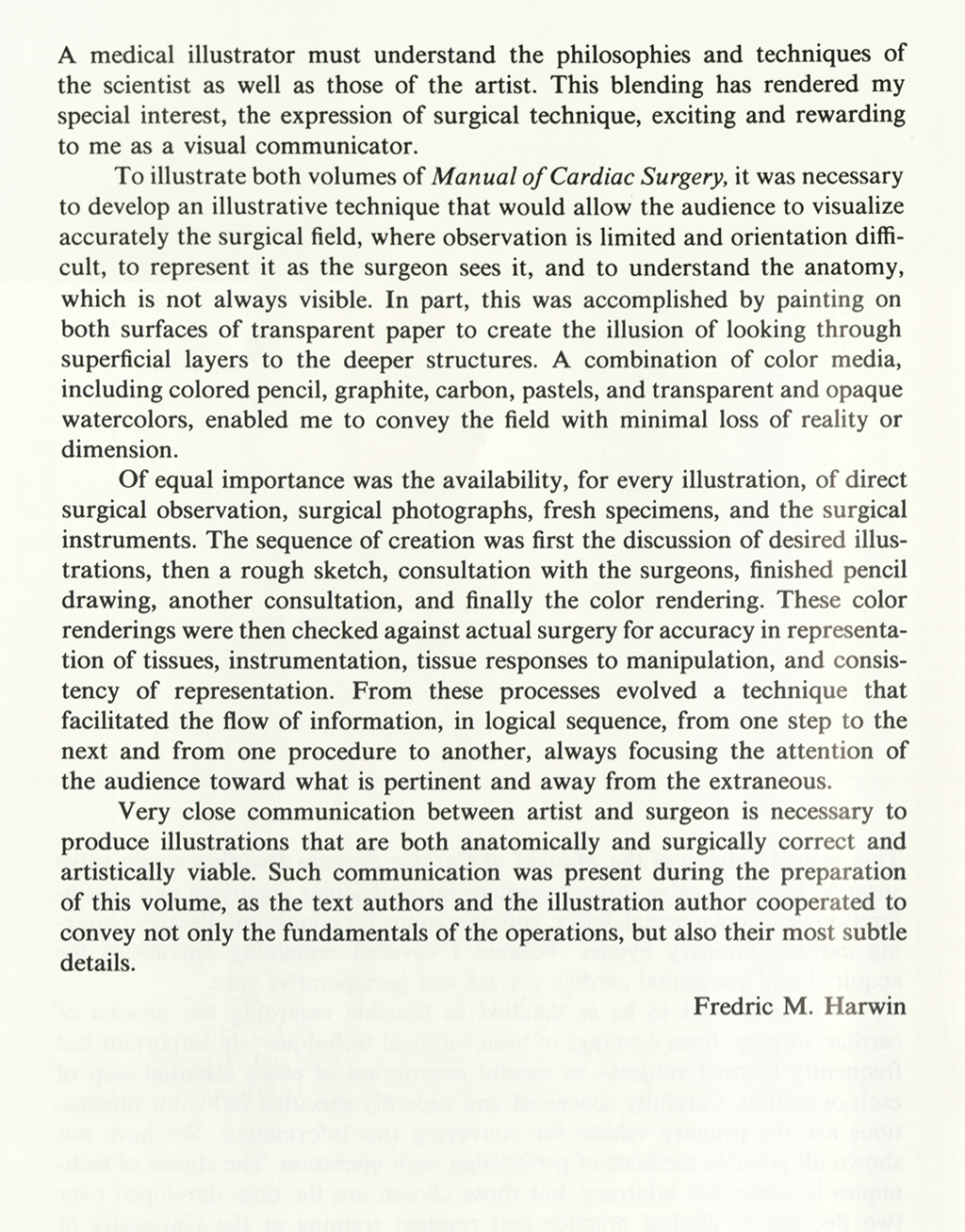
![Harlan, Bradley J., Albert Starr, and Fredric M. Harwin. Manual of Cardiac Surgery. Manual of Cardiac Surgery Vol II. New York: Springer-Verlag, 1980. Fred Harwin Collection [2022-014].](/sites/default/files/2023-02/2022-014_manual-cardiac-surgery_vol-ii_cover_1980.png)
The Manual was the first time in the history of medicine that a medical illustrator was included as one of the text authors. Since the illustrations surpass the text, Harwin was also given the opportunity to write a preface in which he explains the process of creating the illustrations and the importance observation and close communication with the surgeon.
New England Journal of Medicine review
The New England Journal of Medicine (NEJM) is recognized as the world’s leading medical journal. This glowing review of the Manual was published in 1980:
Like canned vegetables, surgical atlases often lack a certain tang and aroma. Not so this manual. It delights in presenting things that are not normally noticed. Its credo is that "the best surgeons do not make fast moves... they make efficient moves. "Accordingly, even "the way a needle is placed in the needle holder, the way the needle holder is held in the hand, and the motions of the hand, wrist, arm..." are detailed. Such attention to these essential components of technical excellence is rare. It will thus stimulate even those already familiar with cardiovascular suture lines to analyze further their own surgical motions.
The book is blessed with a medical illustrator who is not content with the watchful passivity of a photographer. He obviously shares with his surgical co-authors the "continuing ability to create and accommodate." The chapter on aortic coarctation is exemplary, pointing out how to vary operative approaches for unusual anatomy and how to avoid technical errors. Superb color plates illuminate mitral and coronary-artery surgery as well as several operations for congenital cardiovascular anomalies that do not require cardiopulmonary bypass. Perioperative management is covered extensively. Myocardial preservation is reviewed with the magisterial perspective that only a cardiac surgical "conquistador" can give.
Abundant tricks of the trade are revealed throughout. For instance, during "redo" sternotomy the sternal wires are divided anteriorly but left in place posteriorly. The sternal saw can then abut against these sutures when it finishes cutting the posterior table, thus averting damage to subjacent vital structures. Full of nuance and scruple, this world-class atlas establishes new norms. It settles contentious questions (e.g., why paradoxical hypertension occurs after coarct repair) without fuss. It will enrich and enchant all who read it. – Alan T. Marty, M.D.
Alan T. Marty. Review of Manual of Cardiac Surgery, by Bradley J. Harwin, Albert Starr, and Fredric M. Harwin. New England Journal of Medicine Vol. 304 No. 10 (March 5, 1981): 620
Inside the operating room
The success of the Manual was due in part by the close working relationship between Harwin and Dr. Starr. In the operating room, Dr. Starr wanted Harwin to see everything he was seeing. To do this, Harwin was surgically dressed and occupied a stool right behind Dr. Starr. Most of the time he observed by looking over Dr. Starr’s shoulder to see how he did the surgery and what it looked like. Sometimes, Harwin bought in medical photographer Paul Ramsey to shoot reference photos of the procedures. To get an even deeper understanding of the material, Harwin sometimes took body parts home to draw them up close.
The operating room was often full of visiting surgeons and residents who were also observing the procedures. Although Harwin was an illustrator, Dr. Starr made it known that other than the patient, Harwin was the most important person in the room. After observing so many surgeries, Fred often knew more than the residents.
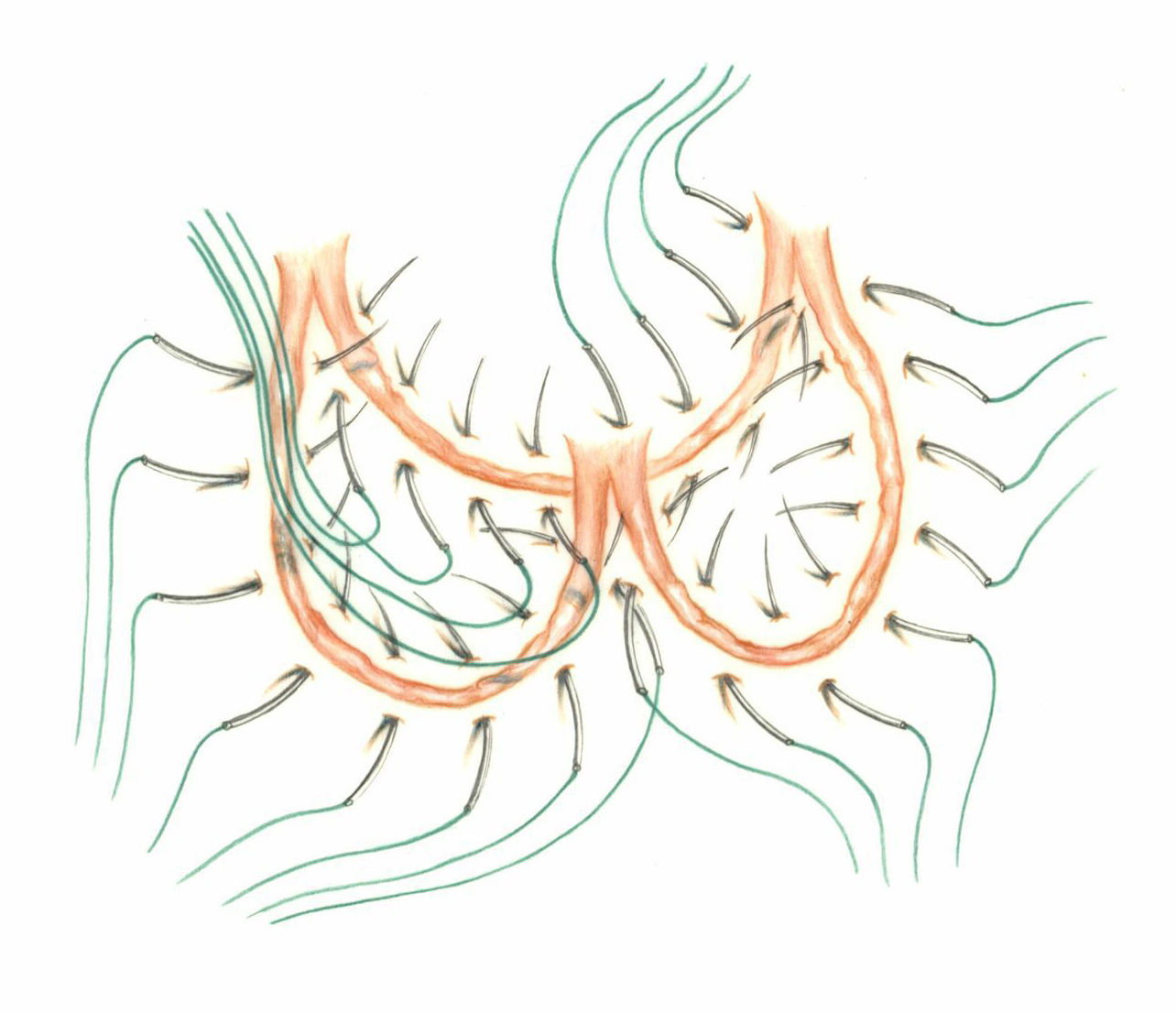
Close observation in the surgery room allowed Harwin to create a detailed diagram showing where the surgical incisions should be and from what direction they come. This illustration demonstrates how to sew standard sutures for aortic valve replacement.
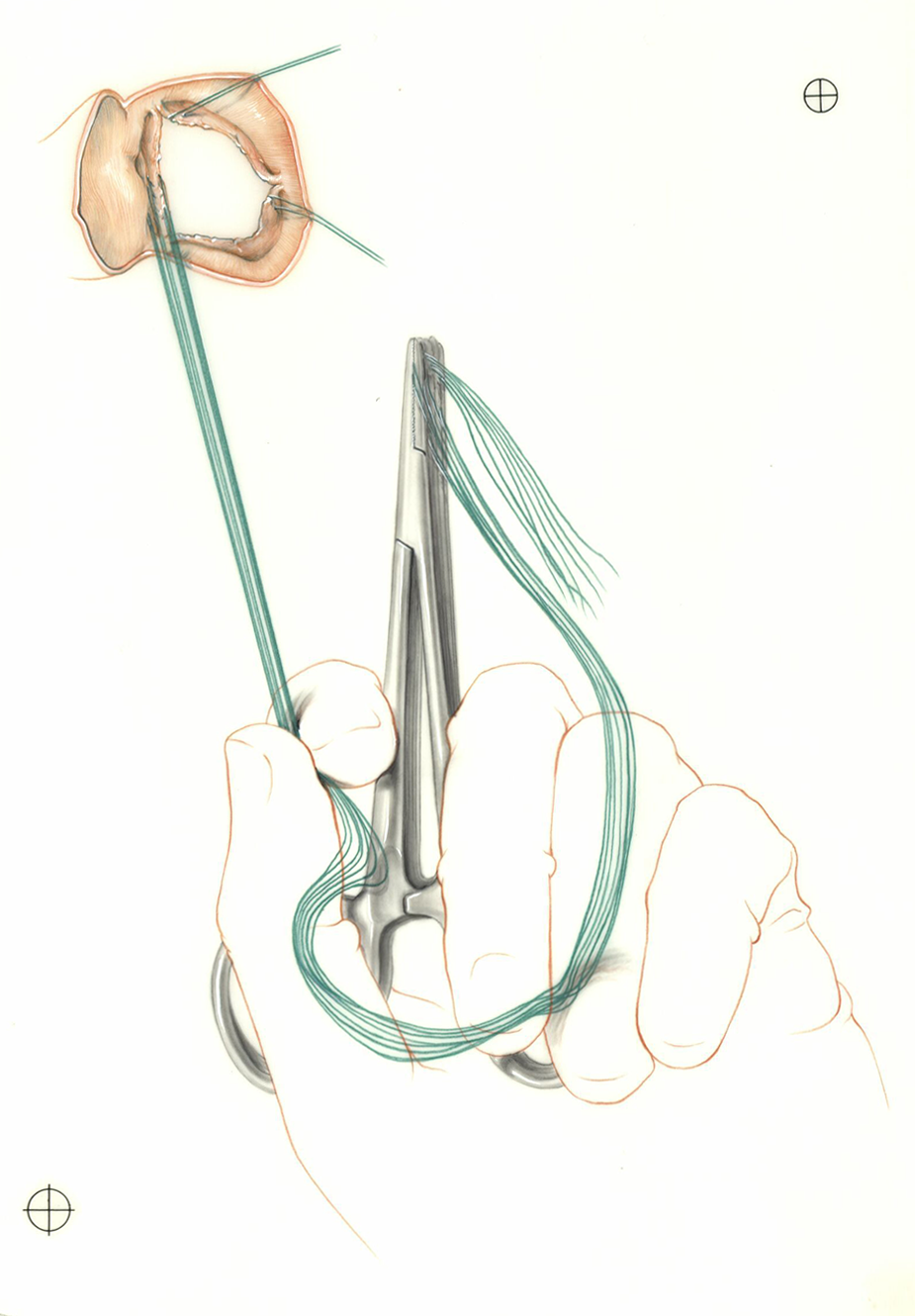
In medical illustration, there are a few standard methods of demonstrating a procedure. The Manual is distinctive in that it was illustrated from the point of view of the surgeon. This allowed Harwin to demonstrate slight differences like hand position and suture tension.
The above illustrations show an intramural clot being scraped out of the heart. It provides an example of Harwin’s technique of drawing the important areas in detail and adopting a simpler drawing style for the hand keeping the focal point on the clot. After observing this surgery, Harwin actually took the blood clot home to draw it in more detail and later returned it to the medical school.
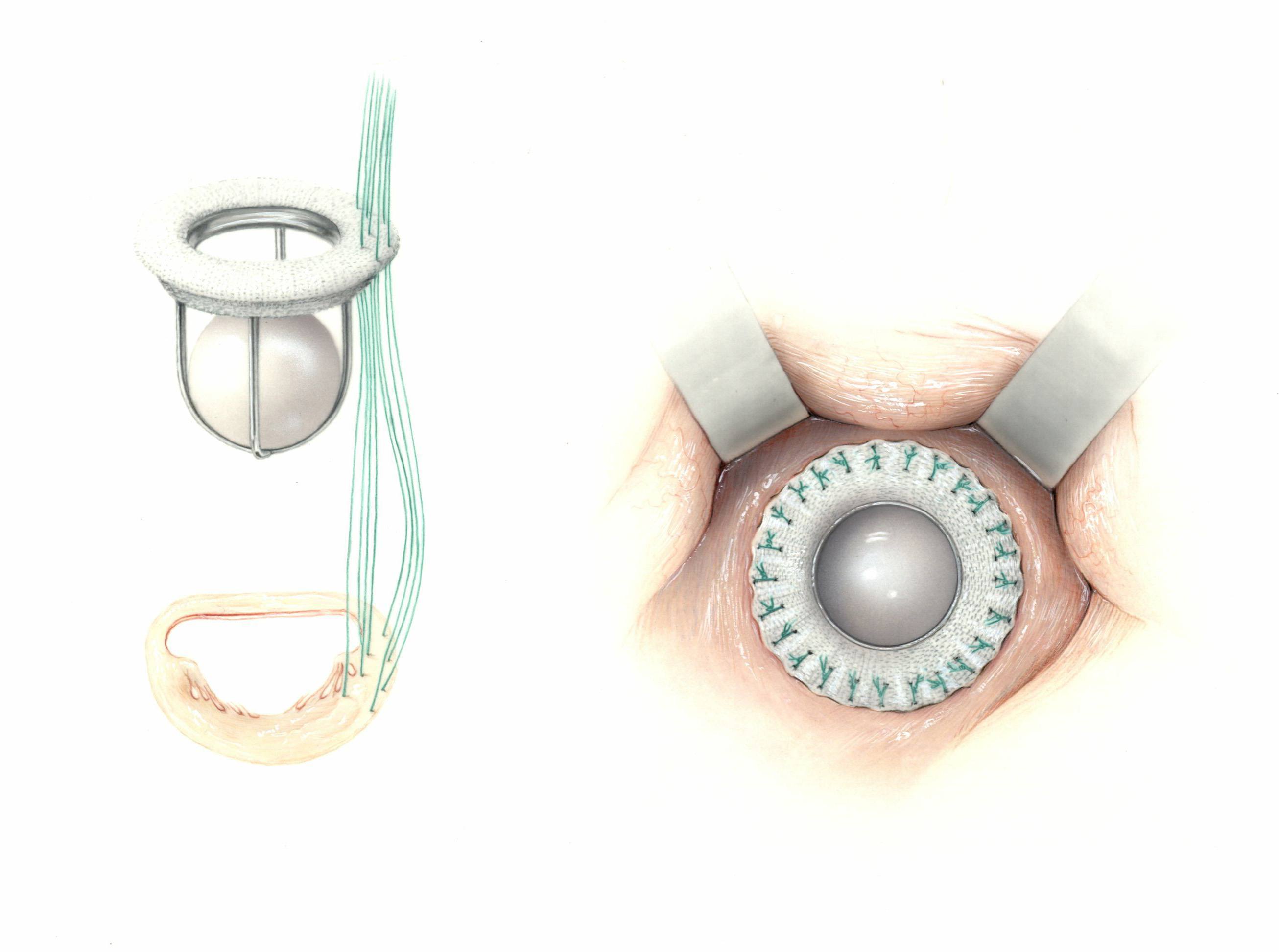
Although not included in the Manual, this illustration shows the placement of the famed Starr Edwards Valve. Prior to the development of the valve, no patient lived longer than 3 months with a prosthetic valve in the mitral position. Their work provided hope for patients with rheumatic heart disease and other valvular disorders.
"IKEA for Surgeons"
One of the strengths of the Manual is the uninterrupted sequence of illustrations. Harwin jokingly refers to the Manual as “IKEA for surgeons” because it was designed to illustrate entire operations without exhaustive text. Harwin’s goal was to clarify the information the surgeon sees and to demonstrate what problems could occur during the procedure. The manual is unique in that the illustrations vastly outnumber the text. This allowed surgeons and medical students who otherwise would not be able to experience these techniques to learn directly from the source.
Below is an example of one such step-by-step sequence, illustrating the technique of Atrioventricular canal correction.
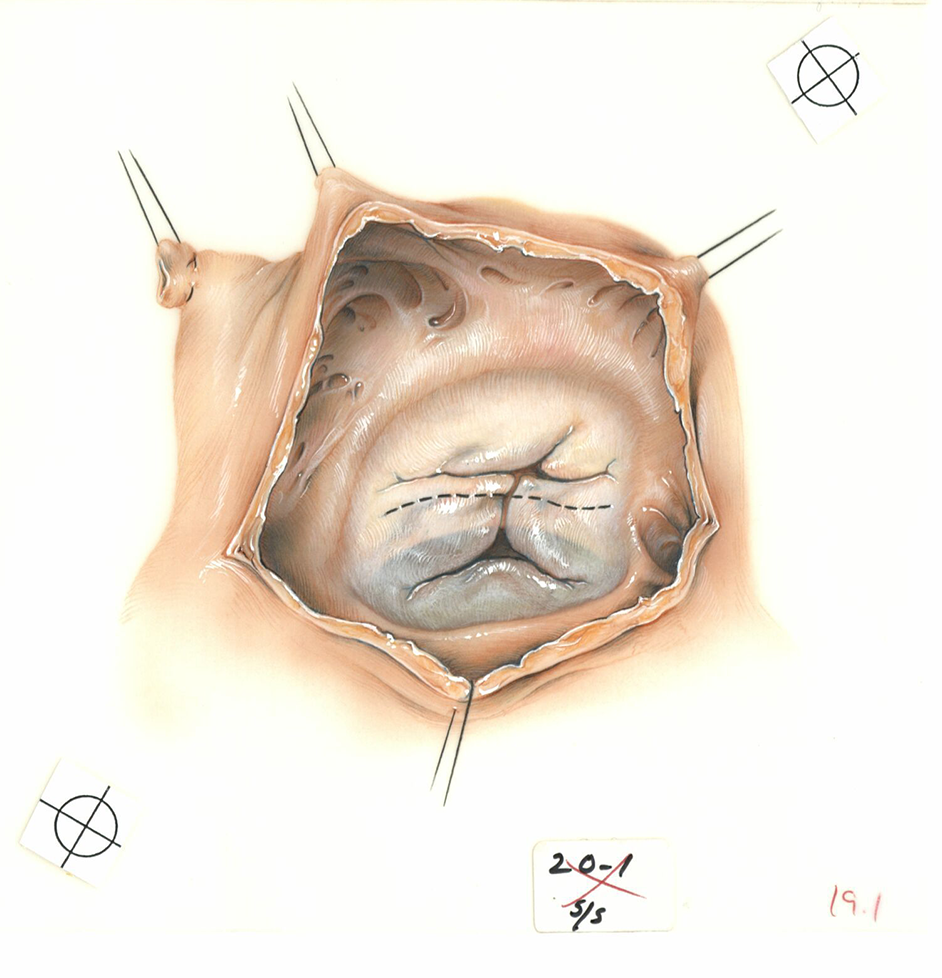
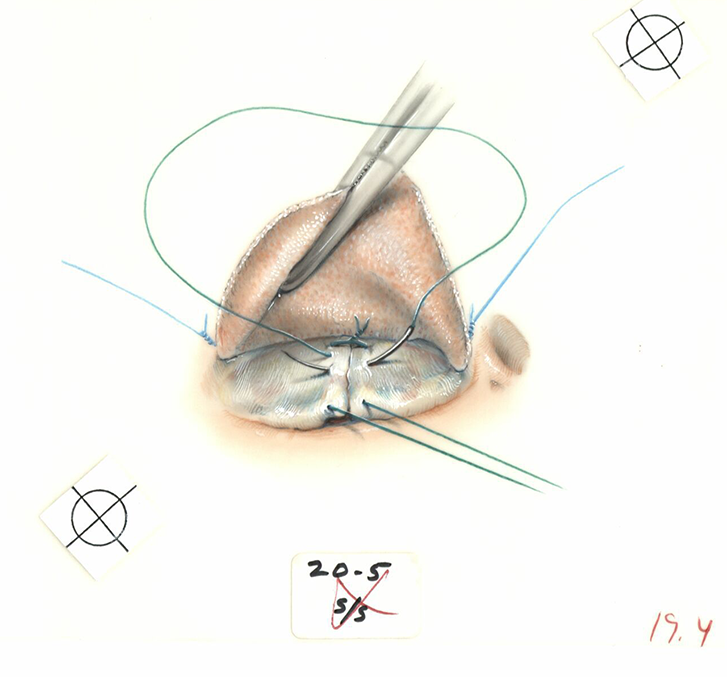
Medical illustration at OHSU
During his time at OHSU, Harwin provided service to the entire staff including researchers and practitioners. His job was to create visual material that would assist in communicating information in teaching, demonstrations, exhibits, articles, journals, and book chapters.
Evolution of illustration techniques
Harwin used several drawing techniques in his early work. Many employ the carbon dust method on Ross stipple board which had the effect of making medical grayscale illustrations appear like living human tissue. This process was created by noted medical illustrator Max Brödel who is considered by many to be the father of modern medical illustration.
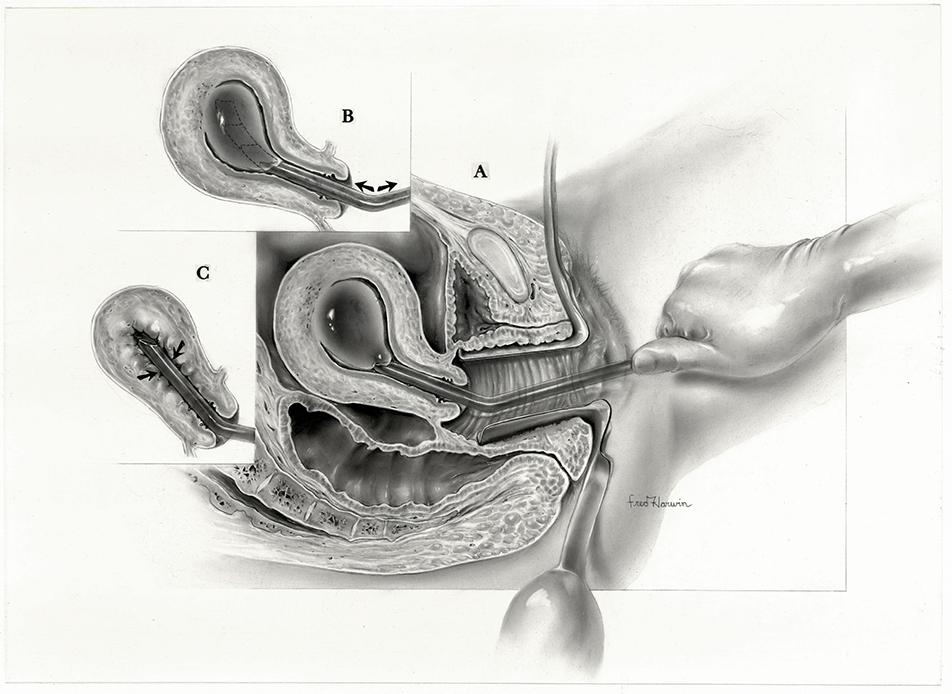
Carbon dust illustration depicting the once-controversial uterine aspiration procedure. This illustration appeared in “Technic of Uterine Aspiration” by C.J. Eaton.
Freelance work
After his work at OHSU, Harwin worked for 15 years as Consulting Illustration Editor with the Gore-Tex company. This work centered on illustrating textbooks, advertisements, promotional pamphlets and other media.
Becoming an ocularist
![Two illustrations of the eye. Fred Harwin Collection [2022-014].](/sites/default/files/2023-02/2022-014_b17_double-eye.png)
Harwin’s career spanned multiple areas and disciplines. While working on creating a department for plastic surgery at OHSU, Harwin became interested in creating prosthetics. He ended his career as the founder and president of the Center for Ocular Prothetics in Portland, OR.
As an ocularist, Harwin created detailed, custom-made ocular prosthetics (artificial eyes) for patients ranging from babies to the elderly. His groundbreaking prosthetics have been featured on Oregon Public Broadcasting, NPR, and at the Sundance Film Festival. Now retired, Harwin still serves as a Senior Advisor for the Center.
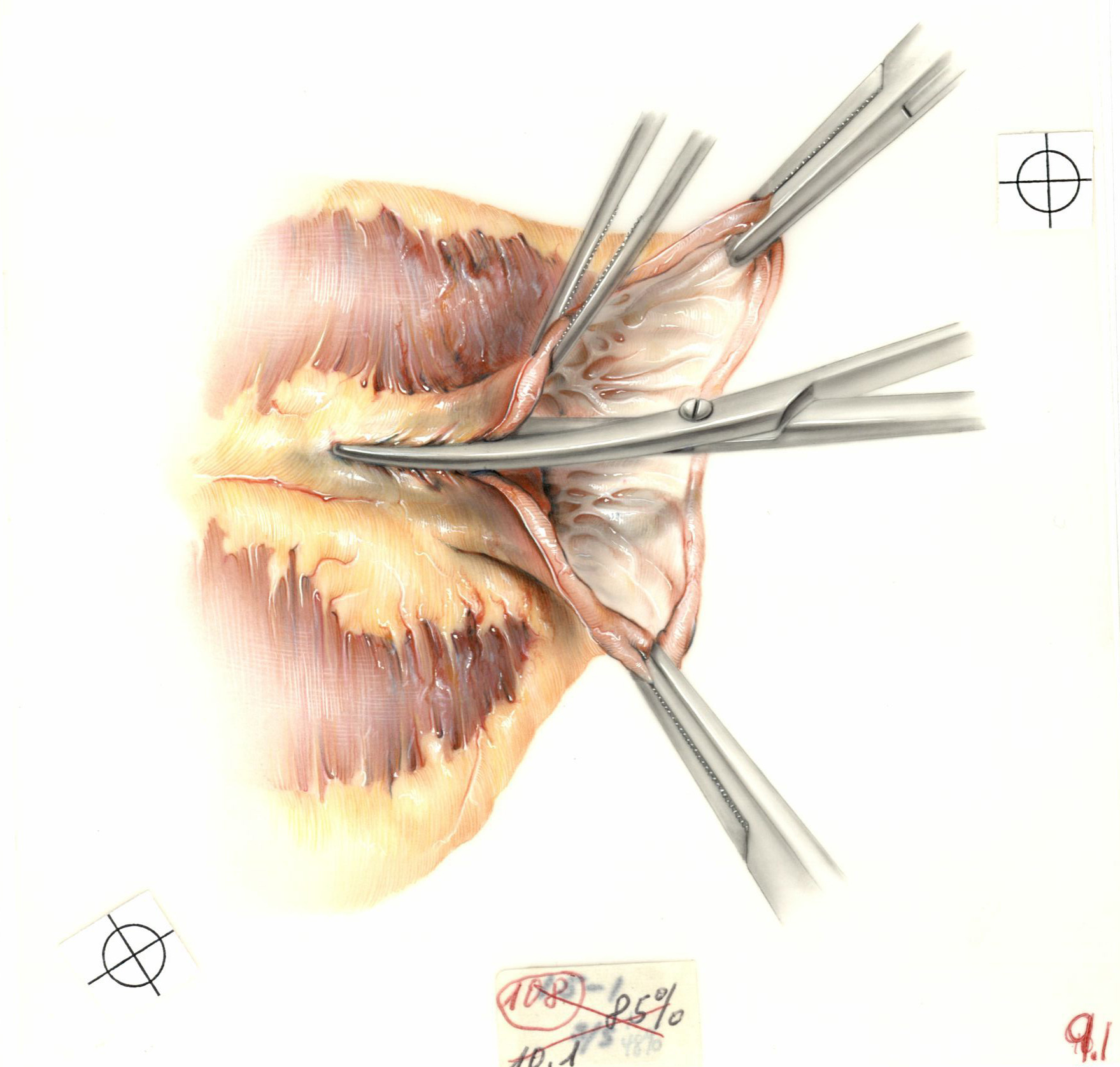
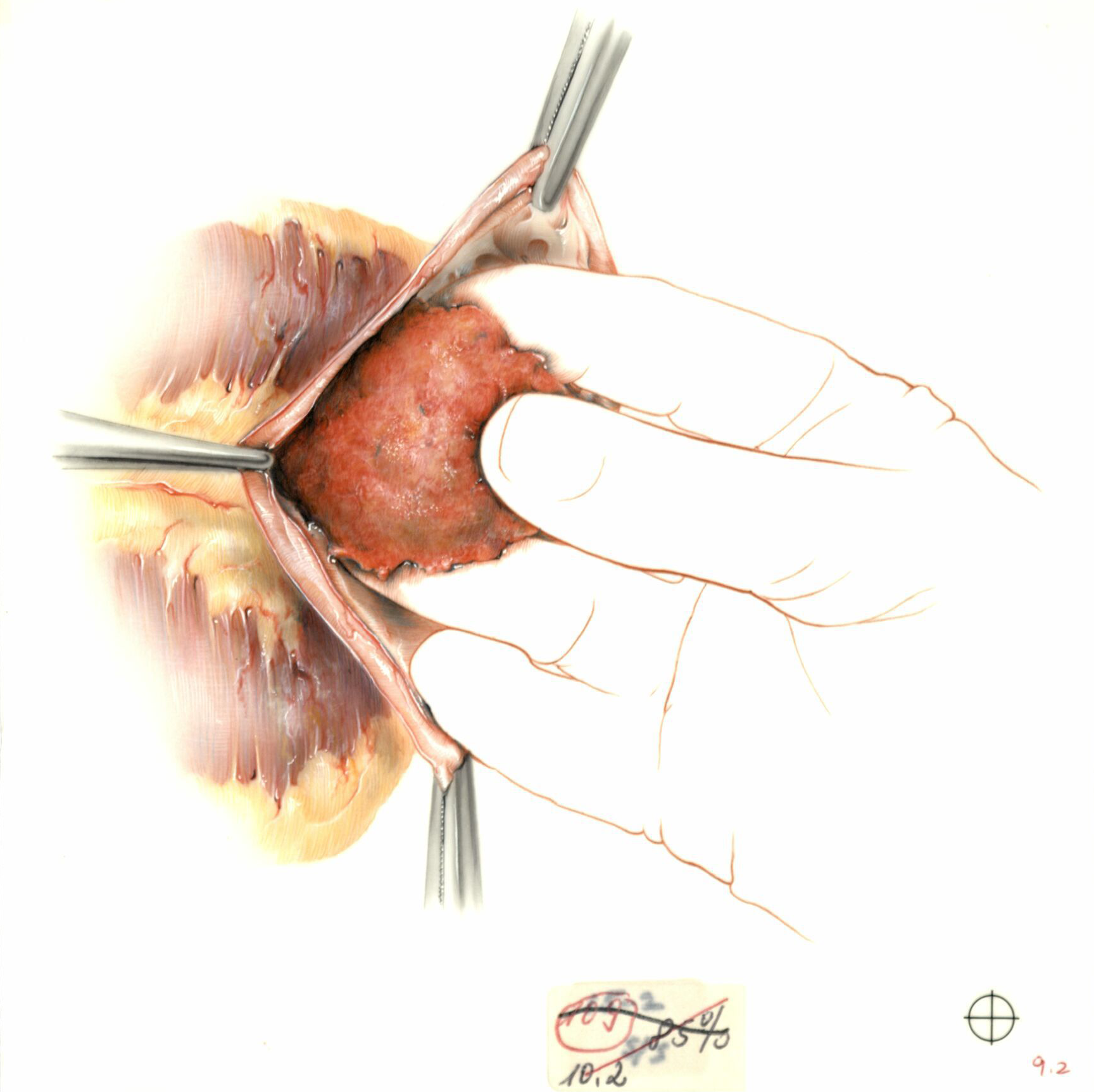

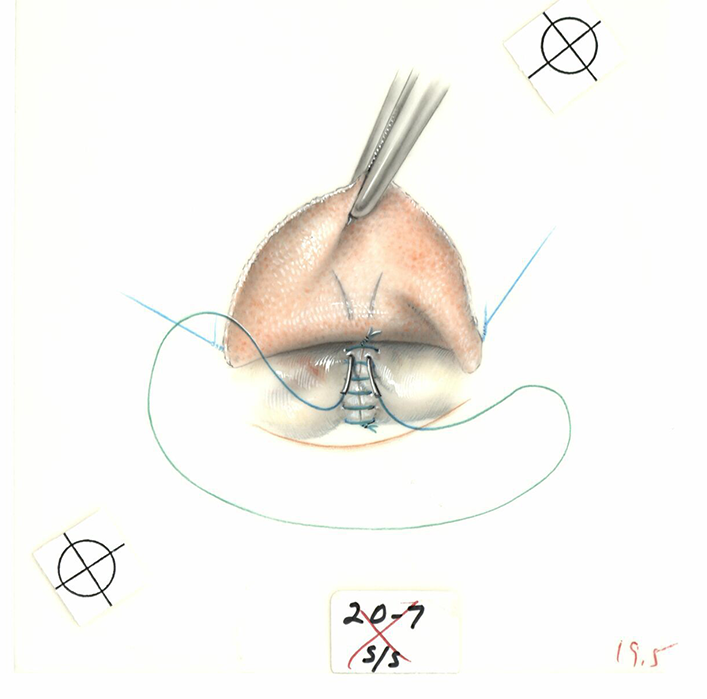
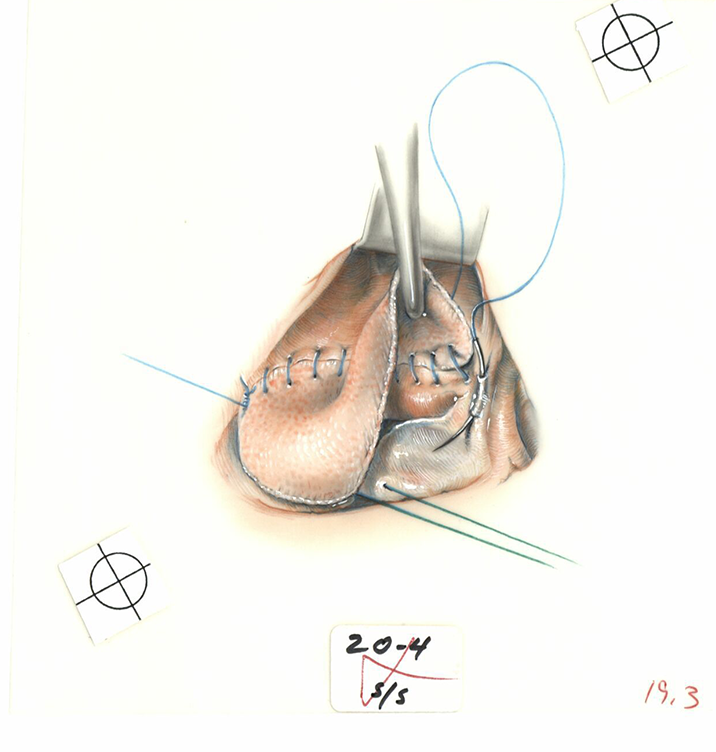
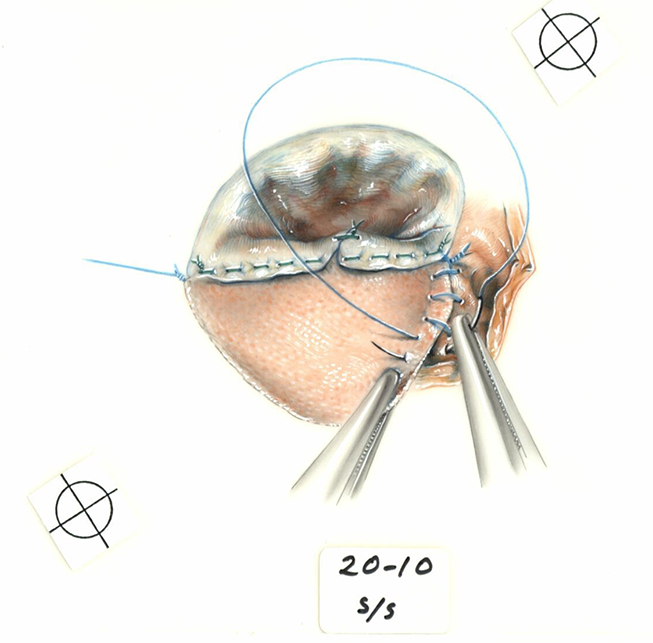
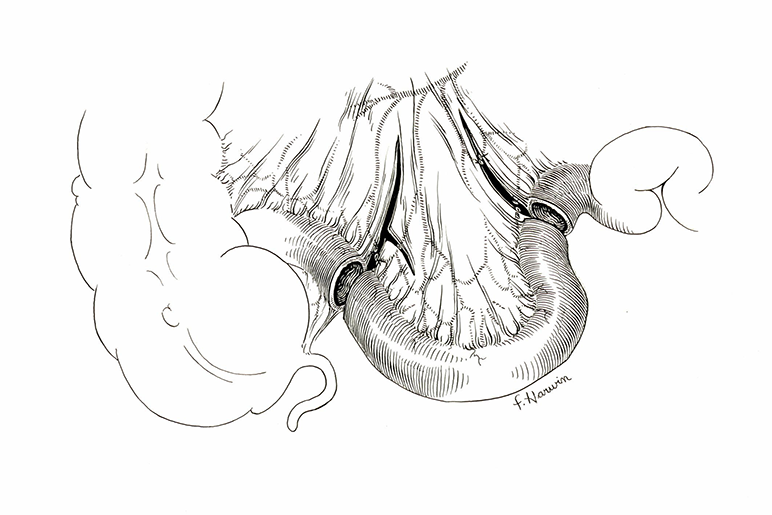
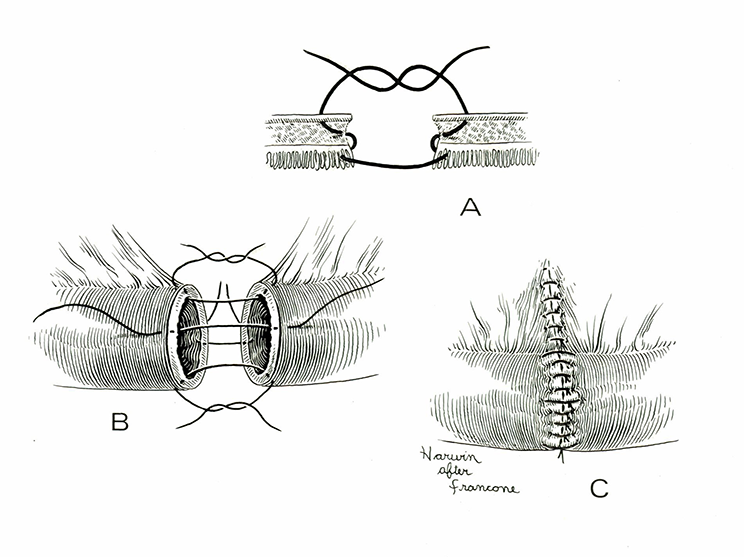
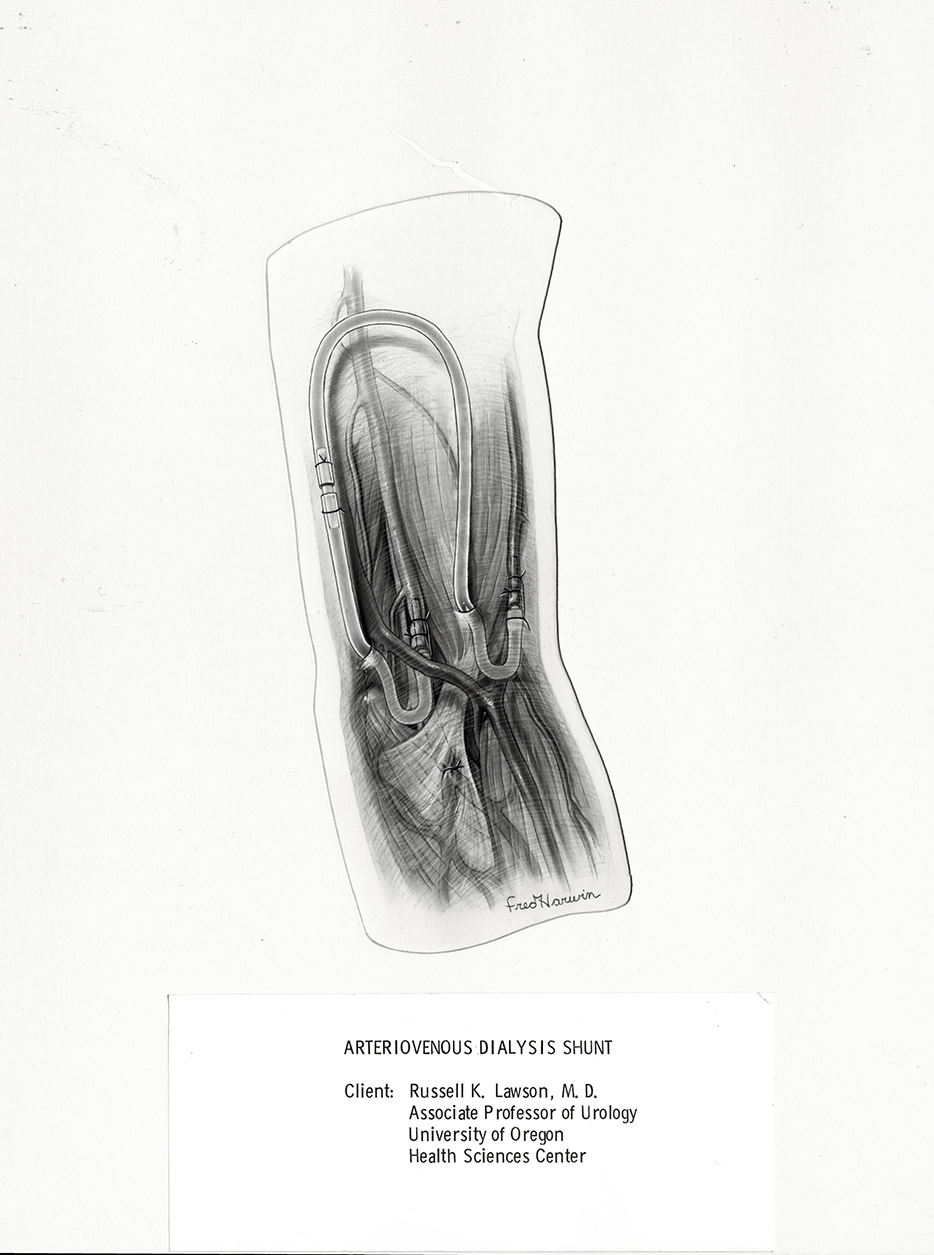
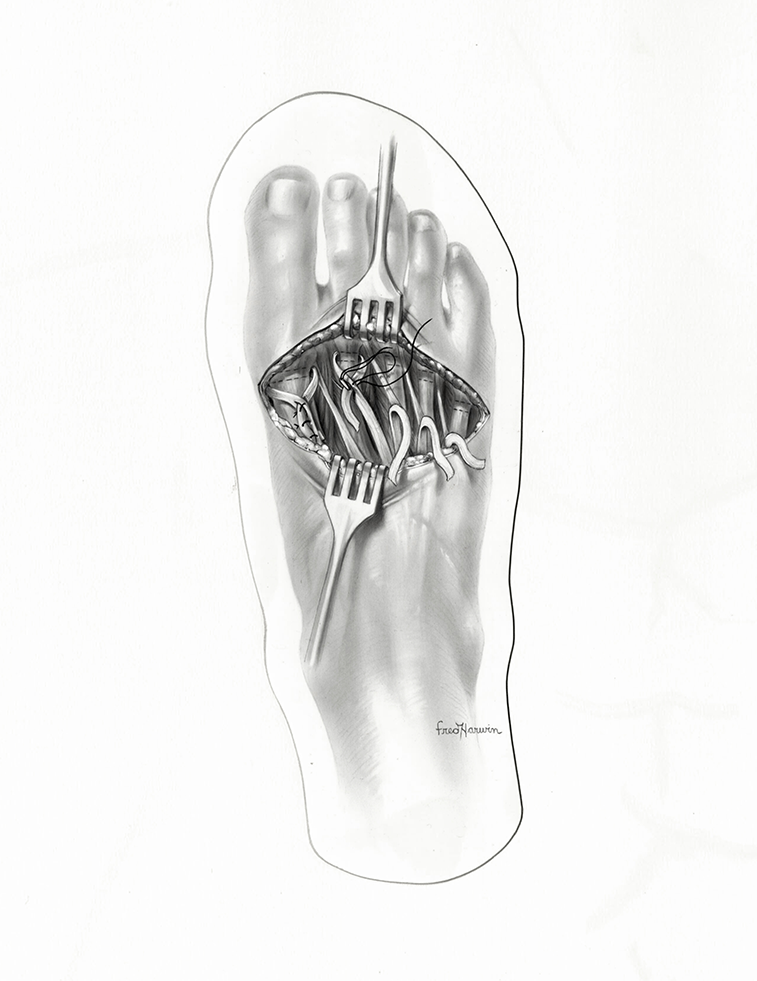
![Gore-Tex illustration of soft tissue patch, 1984. Fred Harwin Collection [2022-014]](/sites/default/files/2023-02/2022-014_b18_1.png)
